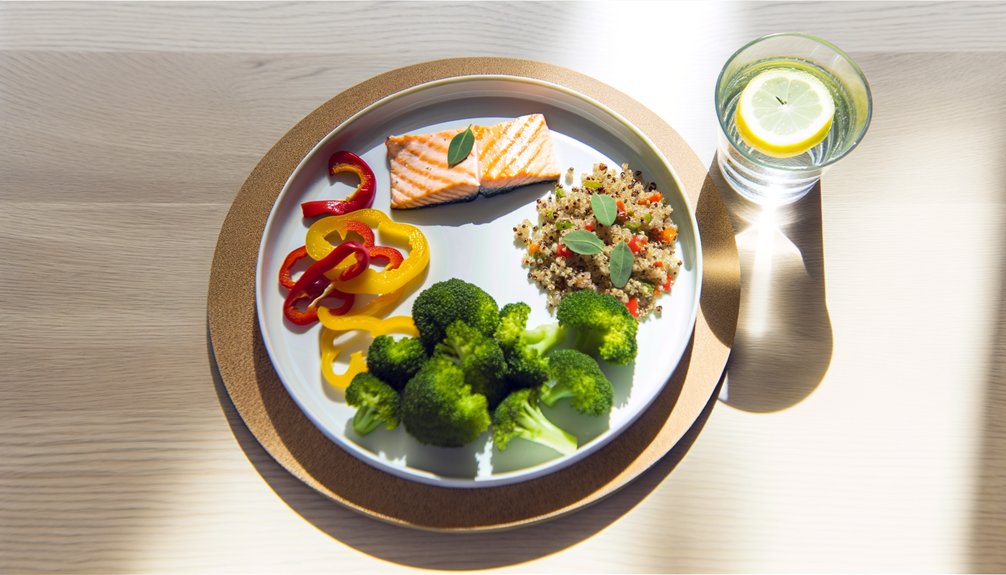Managing type 2 diabetes with a heartfelt meal plan can be a game changer. Picture vibrant plates filled with half your favorite veggies, a quarter of lean protein, and a quarter of whole grains. Fill your days with three small meals and three satisfying snacks, keeping blood sugar steady. Choose fiber-rich foods like quinoa salads and nuts for snacks. Embrace flavorful options while cutting out sugary drinks. There’s so much more to discover about making meal choices that nourish body and soul.

Type 2 Diabetes Diet Plan
Living with type 2 diabetes can feel like maneuvering through a maze, but a well-planned diet can illuminate the path to better health. For many, finding the right balance in meals can be a game-changer. Imagine enjoying three small meals and three snacks throughout the day. This approach not only meets calorie needs but also stabilizes blood sugar levels, especially for children grappling with diabetes.
Picture a plate divided into sections: half filled with vibrant non-starchy vegetables, a quarter with lean protein, and another quarter with healthy starch. This simple visualization can transform mealtime into a mindful experience. Research shows that following a Mediterranean eating pattern can enhance insulin sensitivity and reduce inflammation, making it easier to control blood sugar levels.
Visualize your plate: half vibrant veggies, a quarter lean protein, and a quarter healthy starch for mindful, balanced meals.
Sugar-laden drinks may seem tempting, but gradually swapping them for water or low-fat milk can drastically cut unnecessary calories and sugar intake. Regular meal timing—spacing meals every two to three hours—prevents those dreaded blood sugar spikes. Collaborating with registered dietitians or diabetes educators can help tailor a meal plan that fits individual needs, making the journey feel less overwhelming.
Managing carbohydrates is equally important. Choosing nutrient-rich options like whole grains, fruits, and legumes over processed carbohydrates makes a significant difference. High-fiber foods, ideally at least 14 grams per 1,000 calories, slow carbohydrate absorption and improve glycemic control. Imagine savoring a delicious bowl of beans or a hearty quinoa salad, knowing they are both satisfying and beneficial. Consistent carbohydrate intake is crucial for maintaining stable blood sugar levels throughout the day. Additionally, it is important to monitor carbohydrate portions to help manage blood sugar levels effectively.
Healthy fats play a role, too. Limiting saturated fats found in animal products can reduce cardiovascular risk. Even healthy fats like olive oil should be enjoyed in moderation. Incorporating nuts and seeds into snacks not only adds flavor but also boosts health.
Finally, keeping sodium below 2,300 mg a day and eliminating sugar-sweetened beverages can aid overall metabolic health. With a mindful approach to protein, focusing on lean sources, one can support muscle mass while enjoying tasty meals. Through these small, intentional changes, a fulfilling and healthful life is within reach.
